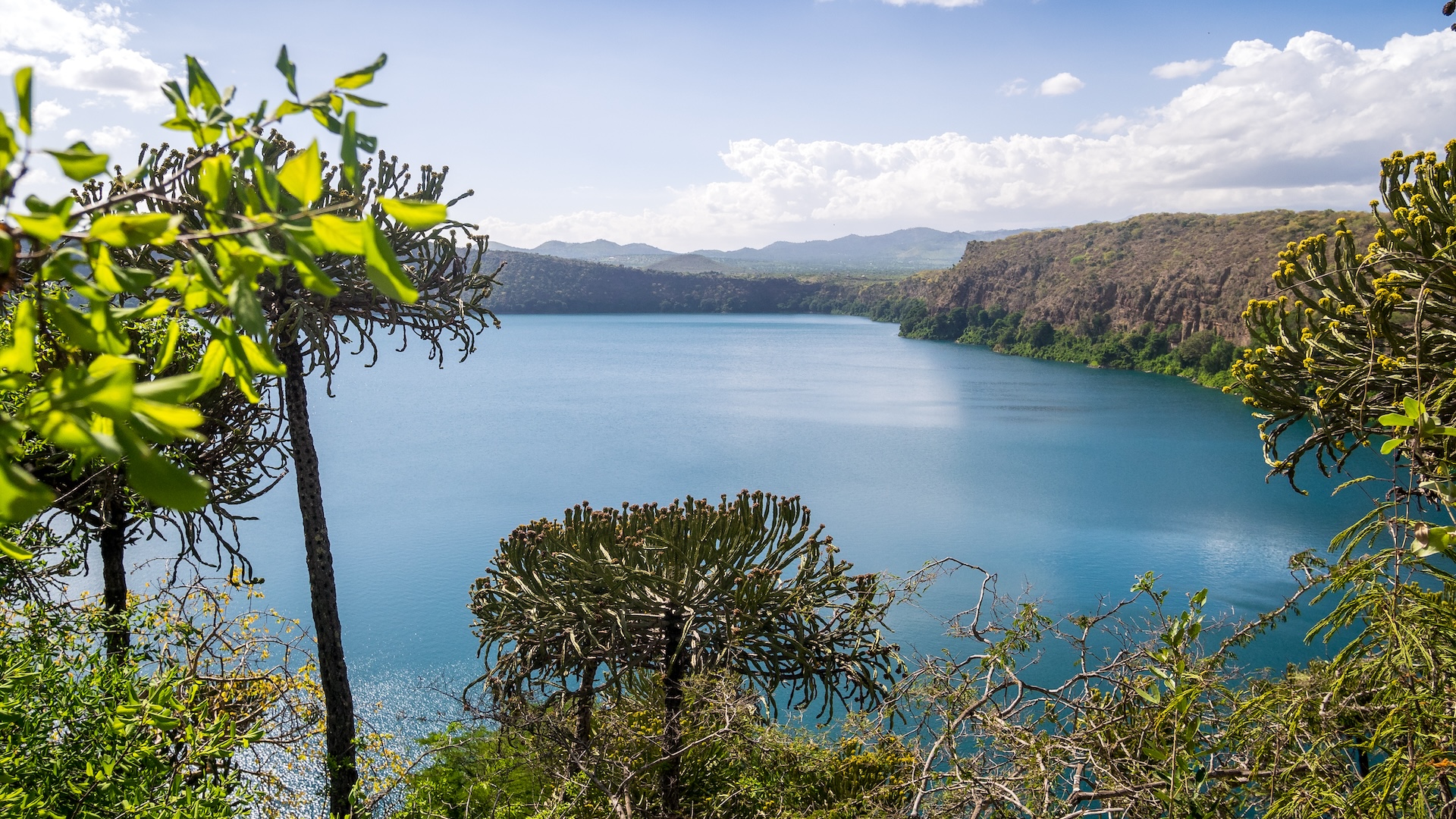150,000-year history of Earth's magnetic field reveals clues about the climate when early humans were spreading out of Africa
The record sheds light on the climate early humans experienced when they were spreading out of Africa.

A tree-ringed African lake has yielded a record of Earth's magnetic field spanning the past 150,000 years.
A core of rock and sediment drilled from the bottom of Lake Chala, a picturesque crater lake on the border of Tanzania and Kenya, contains records of the wobbles in the planet's magnetic field. This rock also contains valuable information about the climate over the past 150,000 years, when modern humans were flowing out of Africa, into the Arabian Peninsula and onward to Europe and Asia.
"There is an effort to try to understand what conditions drove [humans] to leave Africa and go populate the rest of Eurasia," said Anita Di Chiara, a paleomagnetist at Italy's National Institute of Geophysics and Volcanology in Rome. To use ancient sediment records to reconstruct the past climate, though, "we need ages," Di Chiara told Live Science. "We need a way to date these sediments."
That's where the variations in Earth's magnetic field come in. When rocks form, they lock in a record of the magnetic field via small magnetic crystals that align with the field at that time. Most of these rock records come from near the poles, where these signals are stronger, Di Chiara said. "Getting an equatorial record is kind of special," she said.
Scientists like Di Chiara can compare the magnetic changes in rock layers from one location, like Lake Chala, to layers around the world where researchers already know how old the rocks are. They can also use layers in the rock from known events to calibrate the data. For example, the core from Lake Chala includes an ash layer from the Toba supervolcano, which erupted in Indonesia 74,000 years ago.
Lake Chala is a special place to get this kind of data, Di Chiara said. It's a crater lake fed by runoff from the surrounding cliffs and forests, not from large streams or rivers. That means the layers at the bottom of the lake aren't mixed up by one-off events, like floods. Instead, the layers are stacked neatly, season by season.
The researchers found six magnetic excursions — temporary, sometimes localized fluctuations in the magnetic field — in the 150,000-year record, they reported in April in the journal Geochemistry, Geophysics, Geosystems. One was an anomaly not seen elsewhere in the rock record, Di Chiara said. Such excursions may be caused by chaotic circulation in Earth's inner core or by interactions between the solid inner core and the liquid outer core.
Get the world’s most fascinating discoveries delivered straight to your inbox.
A magnetic excursion probably would have gone unnoticed to ancient East Africans, but today, fluctuations in the magnetic field matter a lot. That's because the magnetic field protects the planet from the solar wind, a flow of charged particles from the sun. A weaker field means more disruption to communications and electronic equipment from these particles.
The historical data will help researchers predict what the magnetic field will do."They're going to be very happy," Di Chiara said.

Stephanie Pappas is a contributing writer for Live Science, covering topics ranging from geoscience to archaeology to the human brain and behavior. She was previously a senior writer for Live Science but is now a freelancer based in Denver, Colorado, and regularly contributes to Scientific American and The Monitor, the monthly magazine of the American Psychological Association. Stephanie received a bachelor's degree in psychology from the University of South Carolina and a graduate certificate in science communication from the University of California, Santa Cruz.
You must confirm your public display name before commenting
Please logout and then login again, you will then be prompted to enter your display name.
